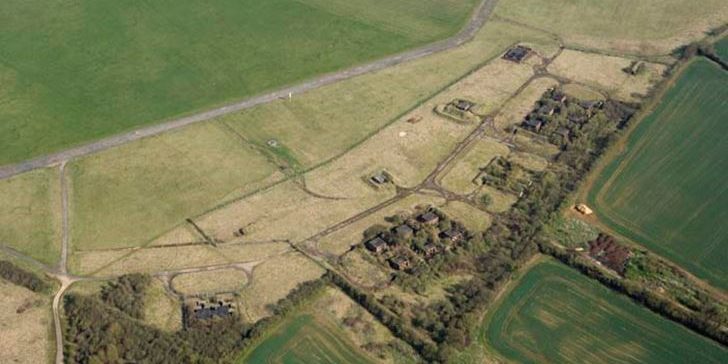Bicester Airfield Development Threatens Historic Site

20th January 2022
Image – Historic England Archive: 26632_011
Approved plans to develop Bicester Airfield, a listed Scheduled Monument and Local Wildlife Site will harm the historic assets of the site: in particular the unique open grass flying field and the setting for the buildings in the Conservation Area.
Bicester Motion have had an outline planning application approved by Cherwell District Council. Development will include, amongst other commercial and industrial development, a vehicle demonstration track as part of a 444-acre masterplan for the creation of the ‘UK’s first automotive resort’.
The airfield dates back to 1916 and is of national importance. It retains, better than any other military airbase in Britain, the layout and fabric relating to both pre-1930s military aviation and the development of Britain’s strategic bomber force in the period up to 1939. The grass flying field still survives with its 1939 boundaries largely intact, bounded by a group of bomb stores built in 1928-1929 and airfield defences built in the early stages of the war. The remains included in the scheduling are, along with the listed hangars and other listed buildings, the key structures within this military landscape. A history of the site and list of the 11 separate areas of protection can be found on the Historic England website. Historic England have submitted an outstanding statutory objection to the proposed development.
The development will add to a hotel, car park and the ‘Innovation Quarter’ which have already achieved planning permission. CPRE believes that by submitting applications for sequential chunks of the airfield Local Wildlife Site to be developed- in a tactic known as ‘salami slicing’ – the developers have sought to avoid due scrutiny of the cumulative impact of these applications on the environment. Furthermore, the site is being considered as an industrial development site, with apparently little or no reference to its designation as a listed Scheduled Monument or a Local Wildlife Site.
Development will reduce the area and quality of the wildlife site and will entail loss of irreplaceable habitat resources – in particular of the priority habitat Lowland Calcareous Grassland for which the Council has statutory duties under the Natural Environment and Rural Communities Act 2006.
CPRE have sought expert advice on this matter from specialist consultant ecologists who have exposed flaws in the Biodiversity Net Gain (BNG) calculations put forward by the applicant, and consider that the mitigation and compensation proposals are based on unsupported leaps of faith best characterised as ‘wishful thinking’.
CPRE Oxfordshire has written to Michael Gove, Secretary of State for Levelling Up, Housing and Communities, requesting “this application to be called in by the Secretary of State before significant damage is done to the historic site and the LWS registration that it would no longer be able to be registered as such, with the loss to the country of what is today an important asset.”
